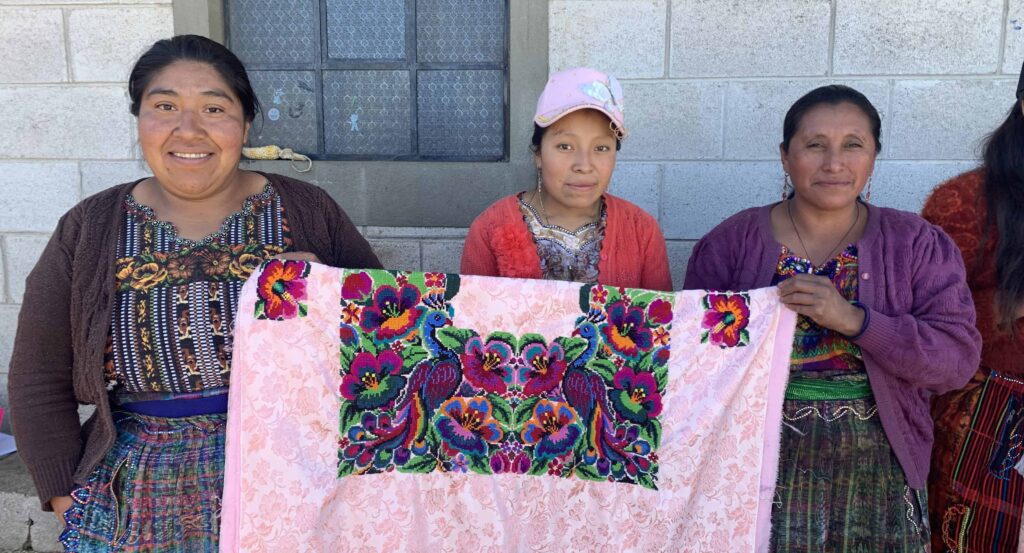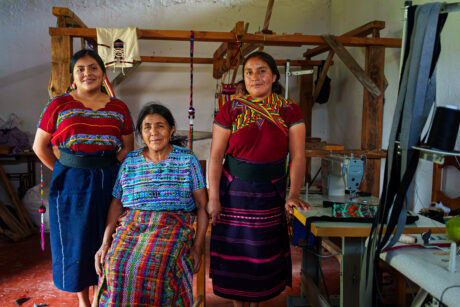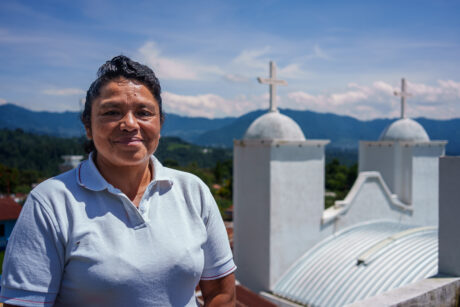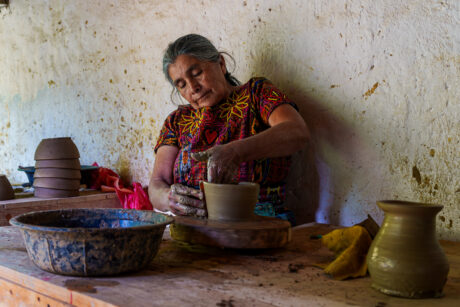
Pachoc, TotonicapãFor Maya women, a woven or embroidered blouse, known as a huipil, is not just part of their traditional dress. It is an expression of culture and history. A huipil tells a story through flowers, animals and geometric figures and is an important aspect of indigenous identity.
Knowing how to cross-stitch and embroider huipiles is a valuable trade and presents an opportunity for women to earn income.
“The majority of us women in the community are financially dependent on our husbands because they are the only ones that work. This can sometimes cause conflict,” says Elena Leticia Caniz, an indigenous woman and community leader from Pachoc.
When the Projeto de Construção da Paz began in Pachoc, Caniz actively participated alongside indigenous authorities, líderes locais, adults, juventude, men and women to identify, prioritize and analyze conflicts in the community.
Community participation is critical to how the Peacebuilding Project addresses social conflict and cohesion in the Western Highlands. O Projeto de Construção da Paz, Tecendo a Paz em espanhol, é um projeto de 6,5 anos financiado pelo NÓS. Agência para o Desenvolvimento Internacional e implementado por Criativos associados internacionais com ParceirosGlobal e ProPaz. Funciona em 130 communities like Pachoc in the Western Highlands to reduce social conflict and build social cohesion.
Addressing economic violence with a needle and thread
It was during this conflict analysis process that the community members of Pachoc identified economic violence as a trigger for conflict that needed to be addressed. Economic violence is a type of gender-based violence and is said to occur when an individual denies their intimate partner access to financial resources, typically as a form of abuse or control.
Em resposta, the Peacebuilding Project worked with the Cooperation for the Rural Development of the Western Highlands (CDRO is the Spanish acronym) to support the women with a course in cross-stitch and embroidery. Adicionalmente, o Ministério da Agricultura, Livestock and Food provided an expert in needlework to train the group.
During nine sessions, 30 women learned to cross-stitch and embroider huipiles as a means of generating income. O que é mais, the women were able to do the work at home during their free time while still attending to their family responsibilities.
Aura Estela Poctzantzín, a 43-year-old indigenous woman, mother of 10 children enjoyed learning something new through the course.
“Before I took the course, I did not know how to cross-stitch or sew anything. Now I do,” says Poctzantzín, smiling. She is still working on her blouse, which she has spent months on and is proud to show off the colors and design.
Stitching a sense of self-worth
The Peacebuilding Project and CDRO maximized the women’s time during the course, teaching them about other critical topics and building their self-worth while they learned to cross-stitch.
“We learned to cross-stitch but we also learned about women’s rights and where we could go to denounce violence,” says Caniz.
“We received trainings from the Office for the Protection of Indigenous Women and the Human Rights Ombudsmen. These trainings woke us up to the fact that as women, we have rights and we have value,”ela diz.
Promoting a holistic, collaborative and coordinated approach between communities, partner organizations and government institutions is a key strategy to how the Peacebuilding Project contributes to weaving a more peaceful social fabric in the Western Highlands.
Financial independence on the horizon
The women received a large metal cross-stitch hoop for future projects. Most of them have already sold their first blouse and plan on purchasing more materials to continue working.
A CDRO representative taught the women how to price their pieces without undervaluing the time and work invested. She also offered to connect them with buyers in the municipal market who would be interested in purchasing their blouses.
“Women now have a way to work,” says Caniz. "Antes, many of them would go to collect firewood and sell it once in a while. Now the majority are in their homes, cross-stitching something they will sell. There’s a satisfaction in that.”
The women felt powerful selling their first blouses, making their own money and deciding how to spend it. Some were over forty years old and experiencing this autonomy for the first time.
It not only moves them closer to financial independence, but it also contributes to their self-worth, helping to break generational cycles of economic violence.



